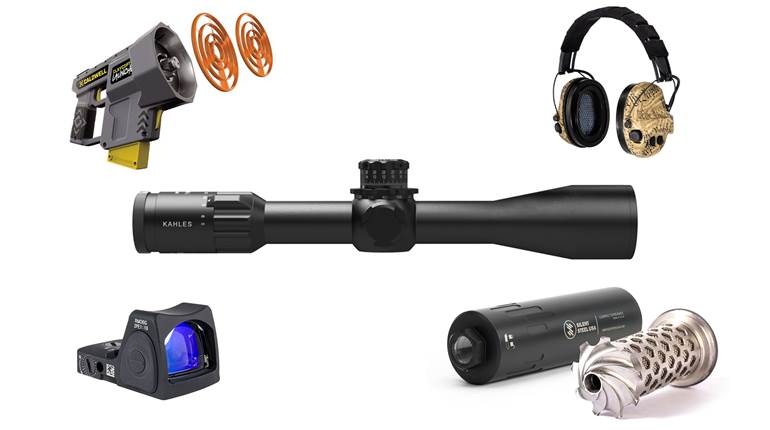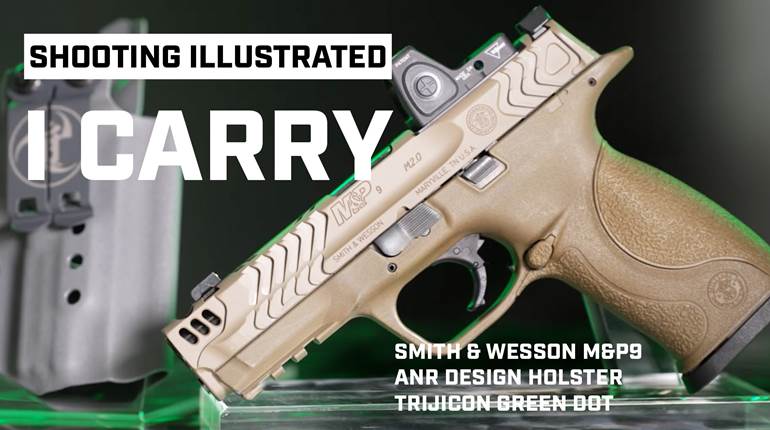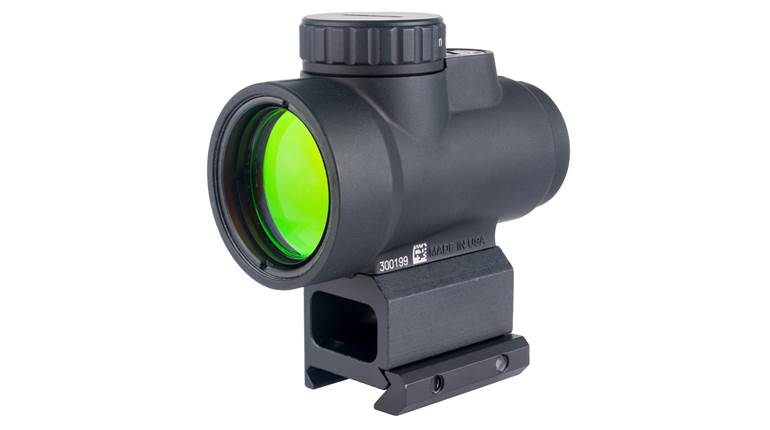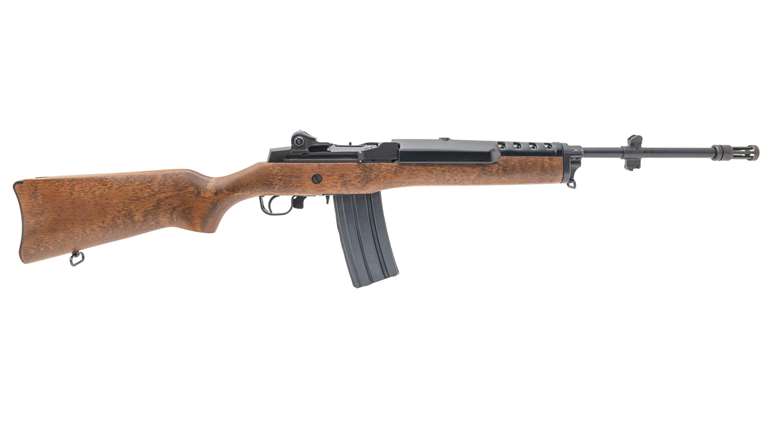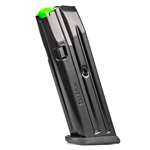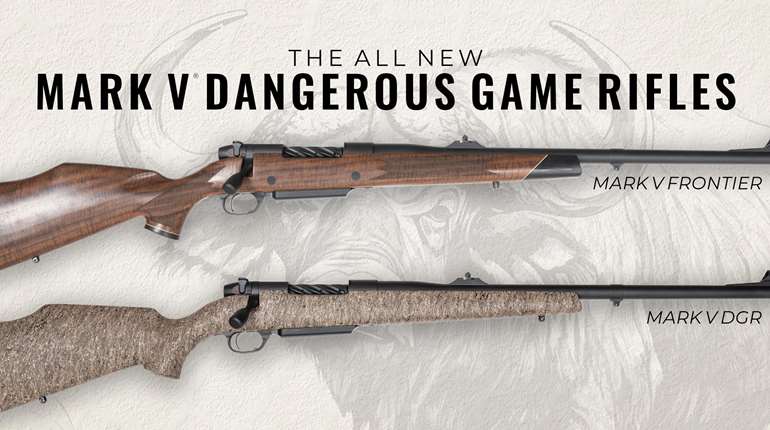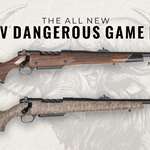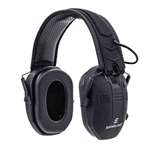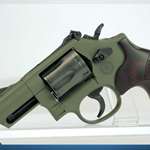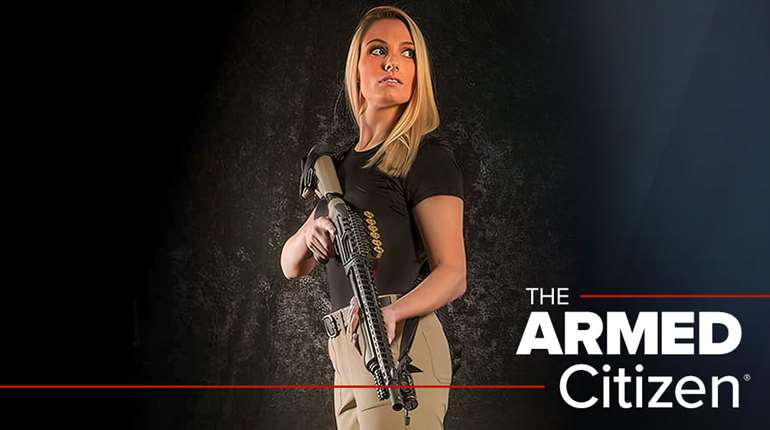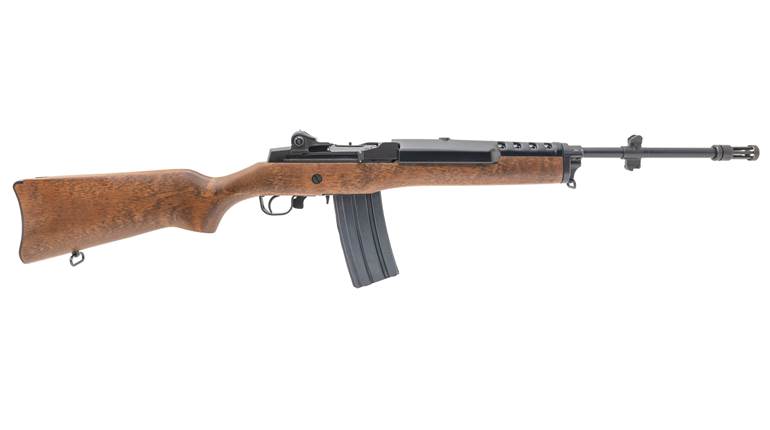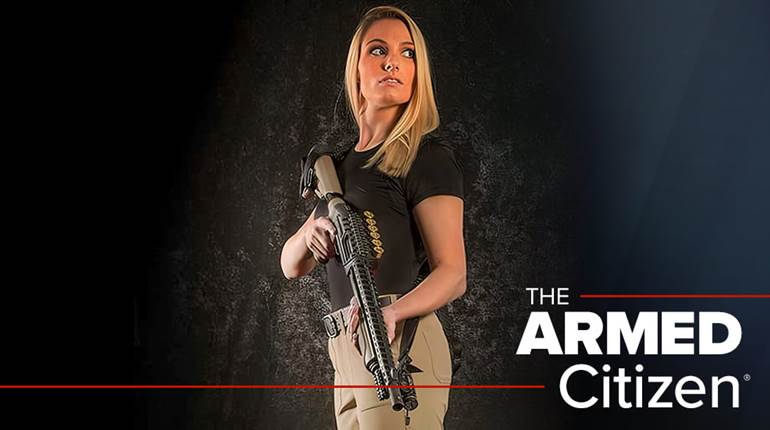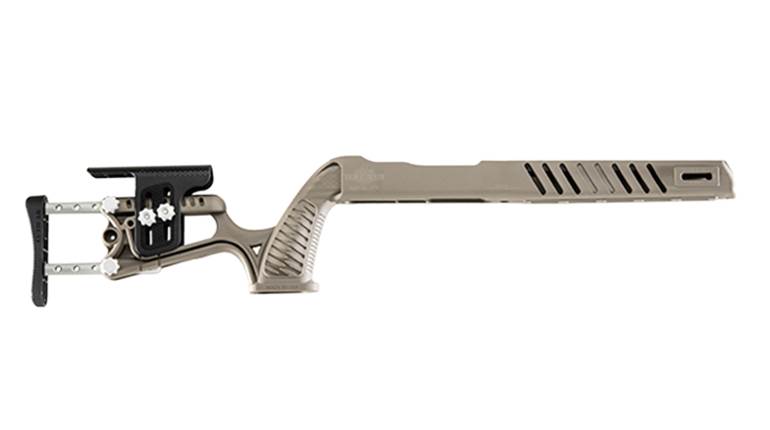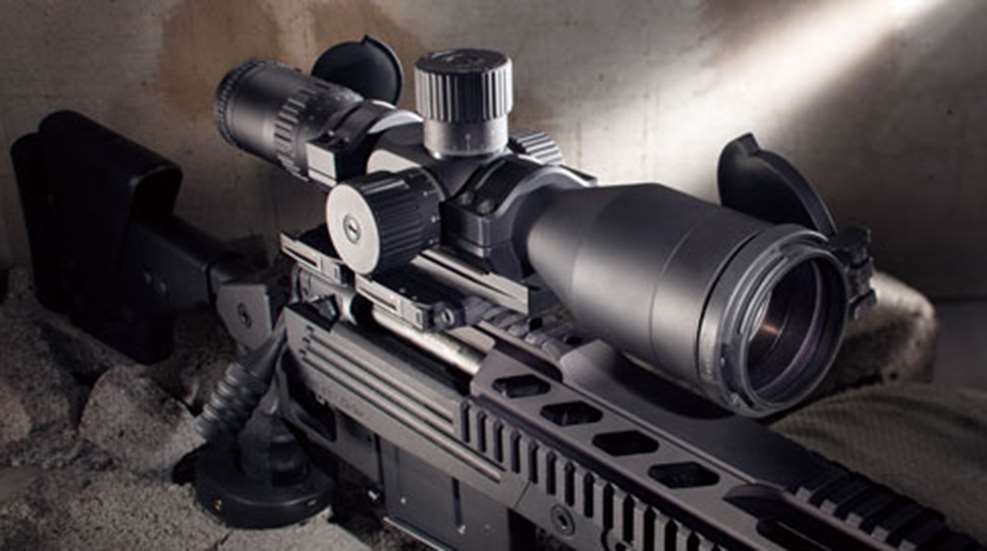
11/19/2012
With a reputation built on the ruggedness and durability of its optics, Trijicon has expanded its line with a variable-power riflescope intended for use by counter-snipers in the military and law enforcement, as well as by hunters and competitors. Toward that end, Trijicon’s engineers developed the 3-15X 50 mm Tactical Advanced RifleScope, or TARS, with features optimized for the unique challenges of long-range shooting.
The TARS’ reticle is in the first focal plane, so its subtension is constant regardless of the scope’s magnification setting. That ensures that the visual ranging properties of reticle are never compromised, such as when the user finds it advantageous to change the magnification for a better view of the target or target area. Along with ruggedness, optical quality was one of Trijicon’s primary design goals, so Schott glass, among the best in the optics industry, was chosen for the TARS’ lenses.
The scope has 10 LED illumination settings. The lowest three are compatible with night vision optics. Although battery-less operation has been a signature feature of Trijicon scopes, the illuminated reticle of the TARS is powered by a single CR2032 battery. Military users are part of the intended market for the TARS, so it has zero forward emission, which means that it has no visual signature when observed through night vision optics. In addition, Tenebraex TT flip-up lens caps are included as standard equipment.
The scope’s illumination settings are controlled by a pressure pad on the bridge just behind the turret for the side-focus parallax adjustment knob, which adjusts from 40 meters to infinity. Side focus makes for quick and easy parallax adjustments, which extend shooter endurance. It is also critical for long-range accuracy. Small parallax errors can mean the difference between a hit and a miss, especially when engaging targets beyond 500 yards.
Three reticle styles are available. The MOA reticle is indexed in minutes of angle (m.o.a.), and the JW MIL-Square reticle is indexed in mils. The MOA reticle has three stadia arms, which leaves the top half of the field of view open. Hash marks indicating 40 minutes of elevation run down the bottom leg of the reticle, and call-offs for 20 minutes of windage stretch out across each horizontal arm. The JW MIL-Square is a bit of a twist on the standard mil-dot reticle in that its mil-dots are open hash marks for every half-mil. There is also a conventional Duplex reticle for hunting.
The TARS’ thick 34 mm main tube provides plenty of room inside the scope for its erector tube assembly, which allows it to provide the generous range of windage and elevation adjustments so critical for long-range shooting. The MOA variant has a range of adjustment for elevation of plus or minus 75 m.o.a. (150 m.o.a. total) and a range of adjustment for windage of plus or minus 60 m.o.a. (120 m.o.a. total). The turret delivers 30 m.o.a. of adjustment per revolution and 1/4 m.o.a. per click. The MIL variant has a range of adjustment for elevation of plus or minus 22 mils (44 mils total) and a range of adjustment for windage of plus or minus 18 mils (36 mils total). One complete turn of the turret delivers 10 mils of adjustment at a rate of 1/10 mil per click.
The target-style turrets use a push-pull locking system. Pulling up on the locking cap frees the turret to rotate clockwise or counter-clockwise as necessary for adjustment, and pushing down locks the adjustments in place. Call-offs are visually indexed with both hashmarks and numbers that run around the base of the turret. Both the windage and elevation turrets have absolute zero stops.
The thick walls of TARS’ 6061-T6 hard anodized aluminum scope body enhance its shock resistance, which helps protect its internal mechanism from damage and better maintains its zero despite rough handling in the field. In addition, the TARS is dry-nitrogen-filled and waterproof-rated to 66 feet of submersion. Multi-layer lens coatings per military specification C-MIL-C-14806A or broadband anti-reflective coatings enhance light transmission, and both exterior lenses are treated with hydrophobic coatings. Carefully applied lens coatings combined with a large 50 mm objective lens allow the TARS to deliver bright images even at its highest magnification settings. Exit pupil diameter ranges from 16.7 mm at the lowest setting to 3.3 mm at the highest. Picking up targets at long range can be a challenge, but thankfully the TARS has a wide field of view, which is rated at 37 feet, 6 inches at 3X and 7 feet, 6 inches at 15X at 100 yards.
With many variable scopes, especially those with large zoom ratios, eye relief shrinks significantly as the magnification setting increases. The TARS, however, has a constant eye relief of 3.33 inches regardless of magnification setting. Fixed eye relief has a number of advantages. The first is safety; it helps protect the shooter, who is less likely to crowd the scope attached to a hard-recoiling rifle. The second is tactical awareness—the shooter won’t have to move his cheek up and down the comb of the stock or risk losing track of the target when he adjusts the magnification setting. In addition, it allows the shooter to maintain a consistent cheekweld, imparting consistency in the relationship of his eye to the scope’s optical axis.
With its large 50 mm objective bell, tall target turrets plus a third parallax turret, the TARS is a big, heavy scope. All in all, it is 14-inches long and weighs 47 ounces, but military marksmen and operators have made it clear to me that they are willing to pay the penalty of extra weight and bulk if it buys them more durability. Rifles, even when handled by disciplined troops, are subject to impact, abrasion and exposure to the elements. Sniper and designated marksman rifles are a force multiplier, so it is essential to keep them in action, thus the TARS’ rugged construction is a necessity.
My test scope came with a quick-release flattop mount from Trijicon. Compatible with M1913 Picatinny rails, the one-piece mount is CNC-machined from a block of 6061-T6 aluminum and, like the TARS, is finished in hard-coat, type-three mil-spec anodized black. The mount weighs just over 14 ounces. The bottom half of the rings are an integral part of the mount, which keeps the scope from riding unnecessarily high over the bore. The distance of the mount surface to the scope’s optical axis is just 1.65 inches. It was clearly made with the TARS in mind; the space between the rings is slightly longer than the bridge of the scope, but it should fit other 34 mm main-tube riflescopes.
I had a chance to try out the TARS at a variety of long-range shooting venues. At one particular shooting event in Castle Valley, Utah, an array of steel silhouettes were set up at various distances ranging from 300 to 800 yards. The push-pull locking feature of the windage and elevation turrets proved to be user-friendly and very reliable. The clicks were clearly audible and positive. The turrets didn’t bind or work loose. The turrets were also clearly indexed, which combined with their absolute zero stops kept us from getting lost in our adjustments. The reliability and repeatability of the TARS adjustments made for numerous first-round hits, even at 800 yards. The images were bright and clear with excellent resolution and contrast that aided in picking precise aiming points and limiting eye fatigue.
The TARS sells in nearly the same price range as comparable high-performance long-range scopes from NightForce and U.S. Optics. Trijicon said that performance comes first when designing and building the TARS, and that certainly showed in my shooting experience. The price is admittedly steep, but an illuminated scope this ruggedly built, with features such as Schott lenses, zero stops and push-pull turrets with repeatable adjustments, costs a lot to make. On top of that, both the scope and the mount are made in the United States.
The industry is still searching for a way to deliver these features and this quality for an economical price and clearly that day is a long way off. That said, this is a scope for those who have a lot at stake, namely soldiers, operators and competitors who are trying to squeeze as much performance as possible from a long range rifle under difficult conditions.
Manufacturer: Trijicon, Inc.; (800) 338-0563; www.trijicon.com
Reticle: first-focal plane for constant subtension; available with MOA, JW MIL-Square and Duplex (tested); the center arms of all three reticle types are illuminated.
Lens Coating: index matched lens system with diamond coat
Adjustment Markings: push-pull auto-locking turrets with 0.10 mil and 10 mils per revolution; or 1/4-m.o.a. call-offs with 10 mils per revolution or 30 m.o.a per revolution
Main Tube Diameter: 34 mm
Magnification: 3-15X
Field of View: 37.5 – 7.5 ft. (10.4 – 2.1 m) @ 100 yds.
Exit Pupil: 16.7-3.3 mm
Weight: 47 ozs.
Length: 14"
Objective Aperture: 50 mm
Eye Relief: 3.3" constant
Elevation Adjustment Range: 44 mils; 150 m.o.a.
Windage Adjustment Range: 36 mils; 120 m.o.a.
Accessories: flip-open Tenebraex lens covers
Suggested Retail Price: $3,995












